Lana Turner (born Julia Jean Mildred Frances Turner; February 8, 1921 – June 29, 1995) was an American film and television actress. Discovered and signed to a film contract by Metro-Goldwyn-Mayer at the age of 16, Turner first attracted attention in They Won’t Forget (1937), and later starred in featured roles, often as an ingenue.
During the early 1940s, she established herself as a leading actress in such films as Johnny Eager (1941), Honky Tonk (1941), Ziegfeld Girl (1941), and Somewhere I’ll Find You (1942). She appeared in the 1941 horror film Dr. Jekyll and Mr. Hyde, and her reputation as a glamorous femme fatale was enhanced by her performance in the film noir The Postman Always Rings Twice (1946). Her popularity continued through the 1950s, in such films as The Bad and the Beautiful (1952) and Peyton Place (1957), for which she was nominated for an Academy Award for Best Actress.
Media controversy surrounded Turner in 1958 when her daughter, Cheryl Crane, stabbed Turner’s lover Johnny Stompanato to death in their Beverly Hills home; a coroner’s inquest concluded that Crane had acted in self-defense. Turner’s next film, Imitation of Life (1959), proved to be one of the greatest successes of her career, but from the early 1960s, her roles were fewer. Turner spent most of the 1970s and early 1980s in semiretirement, only working occasionally. In 1982, she accepted a much publicized and lucrative recurring guest role in the television series Falcon Crest, affording the series the highest rating it ever achieved. Turner made her final film appearance in 1991, and died from throat cancer in 1995, aged 74.
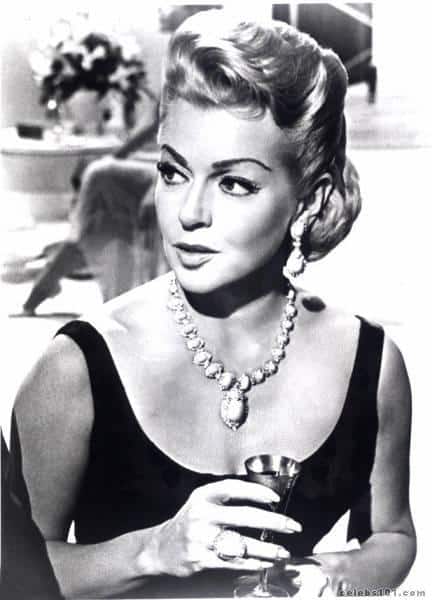
© Image credit
Early life
Turner was born in the small mining town of Wallace, Idaho. She was the only daughter of teenaged parents, John Virgil Turner, a miner from Montgomery, Alabama (January 23, 1903 – December 14, 1930), who was 18 years old when his daughter was born, and Mildred Frances Cowan, of Lamar, Arkansas (June 19, 1904 – February 22, 1982), who was 16 years old when her daughter was born. She had Dutch, Scottish, English, and Irish ancestry.
Until her film career took off, young Julia Turner was known to family and friends as “Judy”. Hard times eventually forced the family to relocate to San Francisco, where her parents soon separated. On December 14, 1930, her father won some money at a traveling craps game, stuffed his winnings in his left sock, and headed for home. He was later found dead on the corner of Minnesota and Mariposa Streets, on the edge of Potrero Hill and the Dogpatch District in San Francisco, his left shoe and sock missing. The robbery and murder were never solved. Soon after, her mother developed health problems and was advised by her doctor to move to a drier climate. With her 10-year-old daughter, she moved to Los Angeles in 1931. Mildred and Lana were very poor, and Turner was sometimes separated from her mother, living with friends or acquaintances so the family could save money. Her mother worked 80 hours a week as a beautician to support them. After Turner was discovered, her mother became the overseer of Turner’s career.
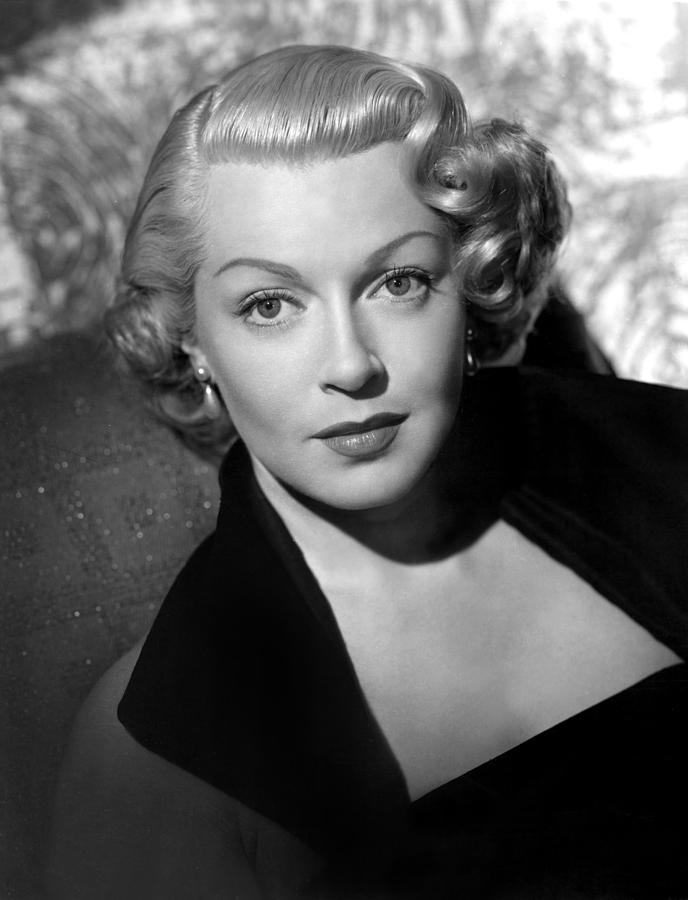
© Image credit
Early years
Turner’s discovery at a Hollywood drug store is a show-business legend. As a 16-year-old student at Hollywood High School, Turner skipped a typing class and bought a Coke at the Top Hat Malt Shop located on the southeast corner of Sunset Boulevard and McCadden Place (not Schwab’s Pharmacy, as is commonly believed and reported), where she was spotted by William R. Wilkerson, publisher of The Hollywood Reporter. Wilkerson was attracted by her beauty and physique, and referred her to the actor/comedian/talent agent Zeppo Marx. Marx’s agency immediately signed her on and introduced her to film director Mervyn LeRoy, who cast her in her first film, They Won’t Forget (1937).
Turner earned the nickname “the Sweater Girl” from her form-fitting attire in a scene in They Won’t Forget. According to her daughter, this was a nickname Turner detested throughout her entire career. In late 1937, she signed a contract with Metro-Goldwyn-Mayer for $100 a week, and graduated from high school in between filming. According to LeRoy, she made the switch thanks to him, for he left Warners to work at MGM and was advised by studio head Jack Warner to take her with him, because Warner believed that she would not “amount to anything”. Her first starring role for MGM was scheduled to be an adaptation of The Sea-Wolf, co-starring Clark Gable, but the project was eventually canned. Instead, she was assigned opposite teen idol Mickey Rooney in the Andy Hardy film Love Finds Andy Hardy (1938). This appearance, as a flirtatious girl described as “the kissing bug”, convinced Louis B. Mayer that LeRoy’s protégée Turner could be the next Jean Harlow, a sex symbol who had died six months before Turner’s arrival at MGM.
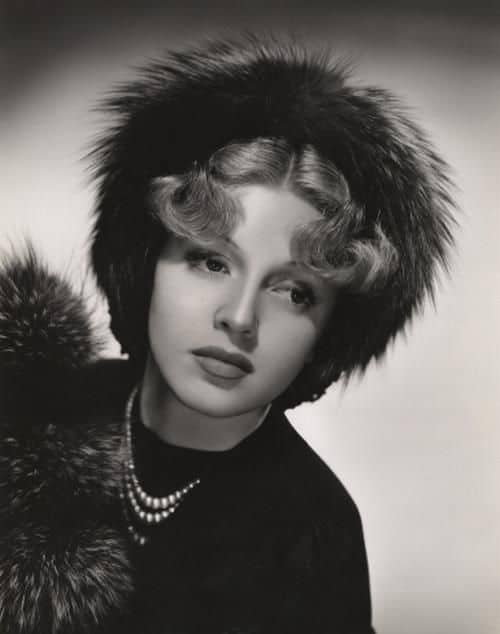
© Image credit
Success
Mayer turned her into a glamorous star and gave her the leads in several youth-oriented films in the late 1930s and early 1940s, such as Dramatic School (1938), These Glamour Girls (1939) and Dancing Co-Ed (1939). In early 1940, she was also set to star in a remake of Our Dancing Daughters, but the film was never made. From the beginning of her career, Turner stood her ground on her beliefs and was one of the few actresses at MGM to go against Mayer’s wishes.
Turner, an actress bolstered by her extreme beauty, reached the height of her fame in the 1940s and 1950s. During World War II, Turner became a popular pin-up girl because of her popularity in such films such as Ziegfeld Girl (1941), Johnny Eager (1942), Slightly Dangerous (1943), and four films with Metro-Goldwyn-Mayer’s “king of the lot”, Clark Gable. The Turner-Gable films’ successes were only heightened by gossip-column rumors about a relationship between the two. Turner even had a B-17 Flying Fortress–the Tempest Turner–named after her. Following the canned The Sea-Wolf project, Turner and Gable were set to star in The Uniform in December 1940. Turner was eventually replaced by Rosalind Russell and the film was released as They Met in Bombay (1941).
Meanwhile, Turner was receiving much publicity for her personal life, and her career was one of the very few to be furthered by this. MGM boosted this by changing the title of her latest film to Slightly Dangerous (1943). After the war, Turner’s career continued successfully with the release, The Postman Always Rings Twice (1946), which co-starred John Garfield. As claimed in a documentary, Turner did not get along with him, and when she found he was her male lead, she responded: “Couldn’t they at least hire someone attractive?” The now-classic film noir marked a turning point in Turner’s career as her first Femme Fatale role. Reviews of the film, and in particular, Turner’s performance, were glowing, with a critic of The New York Times writing it was “the role of her career.”
While not exactly giving up her pin-up credentials, Turner established herself as a skilled actress, and commented on this in 1946:
I finally got tired of making movies where all I did was walk across the screen and look pretty. I got a big chance to do some real acting in The Postman Always Rings Twice, and I’m not going to slip back if I can help it. I tried to persuade the studio to give me something different. But every time I went into my argument about how bad a picture was, they’d say, ‘well, it’s making a fortune.’ That licked me.
She got the role after turning down “four pretty-pretty parts in a row.” The film became a box office success, which prompted the studio to take more risks on the star. In August 1946, it was announced Turner was set to replace Katharine Hepburn in the big-budgeted historical drama Green Dolphin Street (1947), a role for which she darkened her hair and lost 15 pounds. She was cast due to the persistence of producer Carey Wilson, who was overwhelmed by her performance in The Postman Always Rings Twice. Turner later recalled she was surprised about replacing Hepburn, saying: “And I guess I’m about the most un-Hepburnish actress on the lot. But it was just what I wanted to do.” It was her first starring role that did not center on her looks. In an interview, Turner said: “I even go running around in the jungles of New Zealand in a dress that’s filthy and ragged. I don’t wear any make-up and my hair’s a mess.” Nevertheless, she insisted she would not give up her glamorous image.
Later that year, Turner headlined Cass Timberlane, a role for which Jennifer Jones, Vivien Leigh, and Virginia Grey were previously considered. As of early 1946, Turner was set for the role, but schedules with Green Dolphin Street almost prohibited her from taking the role, and by late 1946, she was almost recast. Production of Cass Timberlane was very exhausting for Turner, as it was shot in between retakes of Green Dolphin Street. Nevertheless, she took the female lead in Homecoming (1948) in August 1947, only moments after finishing Cass Timberlane. She was the studio’s first choice for the role, but they were reluctant to offer her the part, considering her overbooked schedule. Paired again with Clark Gable in Homecoming, their chemistry projected on the screen was well received by the audience, and they were nicknamed “the team that generates steam”. By this period, Turner was at the zenith of her film career, and was not only MGM’s most popular star, but also one of the 10 best-paid women in the United States.
In 1948, Turner appeared in her first Technicolor film, as Lady de Winter in The Three Musketeers, opposite Gene Kelly, Van Heflin, and June Allyson. In November 1947, she agreed to do the film, thereby giving up an unfinished film project called Bedeviled. However, in January 1948, it was reported that she had withdrawn from the film. Initially, Louis B. Mayer gave her permission for doing so because of her schedule, but she was later that month put on suspension. Eventually, Turner agreed to make the film, but did not start production until March due to having to lose weight. In 1949, she was to headline A Life of Her Own (1950). The project was shelved for several months, and Turner insisted in December 1949 that she had nothing to do with it, saying: “Everybody agrees that the script is still a pile of junk. I’m anxious to get started. By the time this one comes out, it will be almost three years since I was last on the screen, in The Three Musketeers. I don’t think it’s healthy to stay off the screen that long.”
During the 1950s, Turner starred in a series of films that failed at the box office, a situation MGM attempted to remedy by casting her in musicals. The first, Mr. Imperium (1951), was a flop, while The Merry Widow (1952) was more successful. She gave a widely praised performance in Vincente Minnelli’s film, The Bad and the Beautiful (1952) (in a role partly based on Diana Barrymore), and later starred with John Wayne in the adventure film The Sea Chase (1955). She was then cast in the epic The Prodigal (1955), but the film and her performance in general were not well received. After the film Diane (1956), MGM opted not to renew her contract. This was a difficult time for Hollywood’s major studios because a recent court decision forced them to divest themselves of their movie theaters. In addition, television had caught on in a big way; the public was staying home. Turner was just one of MGM’s star roster to be let go. Her career recovered briefly after she appeared in the hugely successful big-screen adaptation of Grace Metalious’s best-selling novel, Peyton Place (1957), for which she was nominated for an Academy Award for Best Actress. Another few box-office failures followed (Another Time, Another Place (1958), for example) when the 1958 scandal surrounding her daughter’s killing of Stompanato threatened to derail her career completely.
In the trail of the related negative publicity, Turner accepted the lead role in Ross Hunter’s remake of Imitation of Life (1959) under the direction of Douglas Sirk. Universal Studios capitalized on her new-found notoriety; the result was one of the biggest hits of the year, and the biggest of Turner’s career; she owned 50% of the earnings of the picture and during just the first year of the film’s release she earned $11 million. Critics and audiences could not help noticing that the plots of Peyton Place and Imitation of Life each seemed to mirror certain parts of Turner’s private life. Specifically, both film depicted the troubled, complicated relationship between a single mother and her teenaged daughter.
She made her last film at MGM starring with Bob Hope in Bachelor in Paradise (1961). Turner’s projects of this era include By Love Possessed (1961), based on the James Gould Cozzens novel. On July 19, 1961, it became the first in-flight movie to be shown on a regular basis on a scheduled airline flight, by Trans World Airlines (TWA) to its first-class passengers. Other highlights of this period include two Hunter productions (for whom she did Imitation of Life), Portrait in Black (1960) and Madame X (1966), which proved to be her last major starring role.

© Image credit
Later years
In 1969, Turner appeared in her only lead starring role on television in ABC’s Harold Robbins’ The Survivors, but despite the presence of other big-name stars, the program fared badly opposite Mayberry R.F.D. and The Doris Day Show on CBS and The NBC Monday Movie, and was cancelled midway into the season.
In the 1970s and 1980s, Turner appeared in several television roles, most notably as a guest star for several episodes on the series Falcon Crest as the mysterious Jaqueline Perrault and The Love Boat, but the majority of her final decade was spent out of the public eye.
On October 25, 1981, the National Film Society presented Lana with an Artistry in Cinema award. In 1994, she received Donostia Lifetime Achievement Award at the San Sebastian International Film Festival, Spain. In 1982, Turner released an autobiography entitled Lana: The Lady, The Legend, The Truth.
Turner stated she was on a “downhill slide” for much of the 1970s, drinking heavily, not eating, missing performances, and only weighing 95 pounds. She decided to stop drinking, eat organic food, and examine her spiritual side. Turner claimed she was celibate for the remainder of her life, after her final divorce in 1969 and had no desire to marry again.

© Image credit
Relationships
Turner was well known inside Hollywood circles for dating often, changing partners often, and for never shying away from the topic of how many lovers she’d had in her lifetime. However, she claimed that sex was not important to her and that she was more of a romantic, stating: “All those years that my image on the screen as “sex goddess”–well that makes me laugh. Sex was never important to me. I’m sorry if that disappoints you, but it’s true. Romance, yes. Romance was very important. But I never liked being rushed into bed, and I never allowed it. I’d put it off as long as I could and I gave in only when I was in love, or thought I was. It was always the courtship, the cuddling, and the closeness that I cared about, never the act of sex itself–with some exceptions of course. I’m not masquerading as a prude, but I’ve always been portrayed as a sexy woman, and that’s wrong. Sensuous, yes. When I’m involved with someone I care for deeply, I can feel sensual. But that’s a private matter.”
Turner habitually married, marrying eight times to seven different husbands:
- Bandleader Artie Shaw (1940). Married only four months, Turner was 19 when she and Shaw eloped on their first date. A young Judy Garland, who reported she had a crush on Artie at that time, was both shocked and heartbroken. The sudden marriage was highly publicized, and there was even talk of MGM releasing her from her contract. She later referred to their stormy and verbally abusive relationship as “my college education”.
- Actor and restaurateur Joseph Stephen Crane (1942-1943, 1943-1944). Turner and Crane’s first marriage was annulled after she discovered that Crane’s previous divorce had not yet been finalized. After a brief separation (during which Crane attempted suicide), they remarried to provide for their newborn daughter, Cheryl. However, their brief second marriage barely lasted a year primarily because the two were simply not compatible. This has been variously attributed to Lana’s work schedule, to Crane’s own ambitions to prove himself as a businessman independent of his prominent wife, and to differences over parenting.
- Millionaire socialite Henry J. Topping Jr. (1948-1952). A brother of Dan Topping, owner of the New York Yankees, and a grandson of tin-plate magnate Daniel G. Reid, “Bob” Topping proposed to Turner at the 21 Club in Los Angeles by dropping a diamond ring into her martini. The ceremony occurred three days after Topping was divorced from his third wife, actress Arline Judge, who had been previously married to his brother Dan. Although worth millions when they married, Topping suffered heavy financial losses due to poor investments and excessive gambling. The couple’s marriage resulted in a church trial for the officiant because the marriage took place less than a year after Topping’s divorce from Judge. Cheryl Crane writes in her memoir that her mother’s wedding to Bob Topping was a beautiful, lavish affair held in the spacious Topping family mansion in Greenwich, Connecticut, with all of the bells and whistles accompanying a traditional wedding. Despite the fact that both bride and groom had been married and divorced multiple times previously, Lana wore a traditional white gown, the bridesmaids wore equally beautiful gowns of Lana’s choosing, and young Cheryl served as the flower girl. Crane goes on to state that she later saw this as her mother’s attempt to finally have a beautiful, traditional wedding while she was still young after three failed marriages (to Artie Shaw and Steve Crane) in which the ceremonies took place before justices of the peace with Lana usually attired in a simple dress suit and heels.
- Actor Lex Barker (1953-1957), whom she divorced. Cheryl Crane’s memoir claims that Barker repeatedly molested and raped her, and after she informed her mother of this, they divorced.
- Rancher Frederick “Fred” May (1960-1962), who was a member of the May department-store family
- Robert P. Eaton (1965-1969);. A movie producer, he went on to write The Body Brokers, a behind-the-scenes look at the Hollywood movie world, featuring a character named Marla Jordan, based on Turner.
- Nightclub hypnotist Ronald Pellar, also known as Ronald Dante or Dr. Dante (1969-1972). The couple met in 1969 in a Los Angeles discotheque and married that same year. After about six months of marriage, Pellar disappeared a few days after Turner had written a $35,000 check to him to help him in an investment; he used the money for other purposes. In addition, she later accused him of stealing $100,000 worth of jewelry. Dante denied that he stole from Turner and no charges were ever filed against Dante.
She later famously said, “My goal was to have one husband and seven children, but it turned out to be the other way around.”
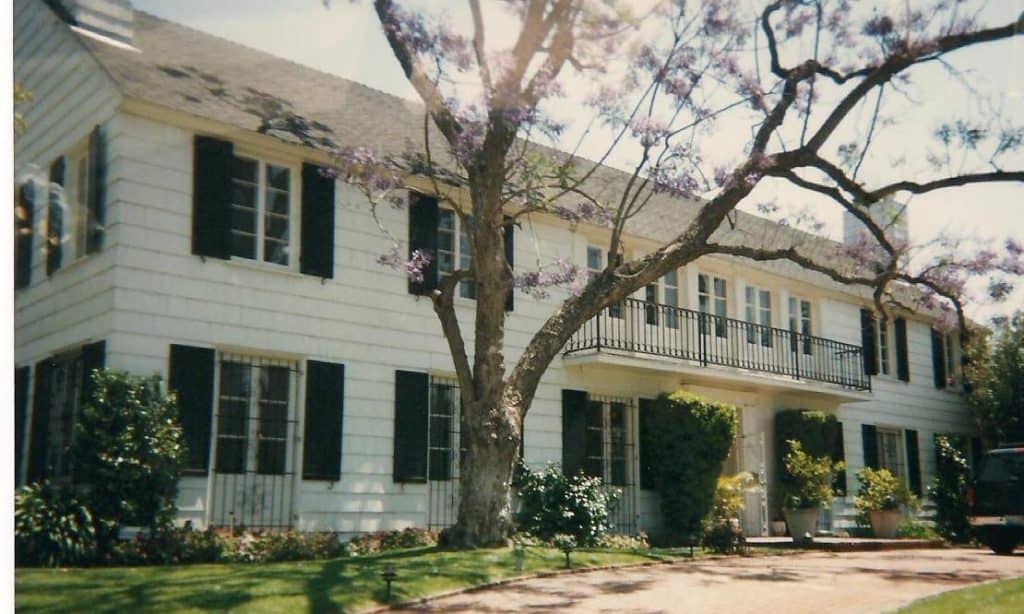
© Image credit
The Stompanato killing
Turner met Johnny Stompanato during the spring of 1957, shortly after ending her marriage to Barker. At first, Turner fell for Stompanato’s good looks and prowess as a lover, but after she discovered his ties to the Los Angeles underworld (in particular, his association with gangster Mickey Cohen), she tried to break off the affair out of fear of bad publicity. Stompanato was not easily deterred, however, and over the course of the following year, they carried on a relationship filled with violent arguments, physical abuse, and repeated reconciliations.
In the fall of 1957, Stompanato visited Turner in England, where she was filming Another Time, Another Place (1958), co-starring Sean Connery. In her autobiography, Turner said she arranged for Stompanato’s visit because she was lonely and having a difficult time filming. Their reunion was initially happy, but the two soon began fighting. Stompanato became suspicious when Turner would not allow him to visit the set and, during one fight, he choked her, causing her to miss three weeks of filming. Turner later wrote that she and her makeup man, Del Armstrong, called Scotland Yard to have Stompanato deported. Stompanato got wind of the plan and showed up on the set with a gun, threatening her and her co-star Connery, whom he warned to keep away from Turner. Connery answered by grabbing the gun out of Stompanato’s hand and twisting his wrist, causing him to run off set sheepishly. Turner and Armstrong later returned with two Scotland Yard detectives to the rented house where she and Stompanato were staying. The detectives advised Stompanato to leave and escorted him out of the house and to the airport, where he boarded a plane back to the United States.
On the evening of April 4, 1958, after the Oscar telecast which she had attended without him, Turner and Stompanato began arguing heatedly in Turner’s rented house at 730 North Bedford Drive in Beverly Hills. Fearing her mother’s life was in danger, Turner’s 14-year-old daughter, Cheryl, grabbed a kitchen knife and ran to Turner’s defense. Many theories abound as to what actually happened, but the teenager apparently stabbed Stompanato, killing him. The murder case quickly became a media sensation. It was later deemed a justifiable homicide at a coroner’s inquest, at which Turner provided dramatic testimony.
Turner also famously dated Tyrone Power for several months and she considered him to be the love of her life. In her 1982 autobiography, Turner claims to have become pregnant with Power’s child, in 1948, but chose to have an abortion. While on a 1948 goodwill trip to Europe and South Africa, he saw and fell in love with Linda Christian in Rome. Power and Christian were married on January 27, 1949.
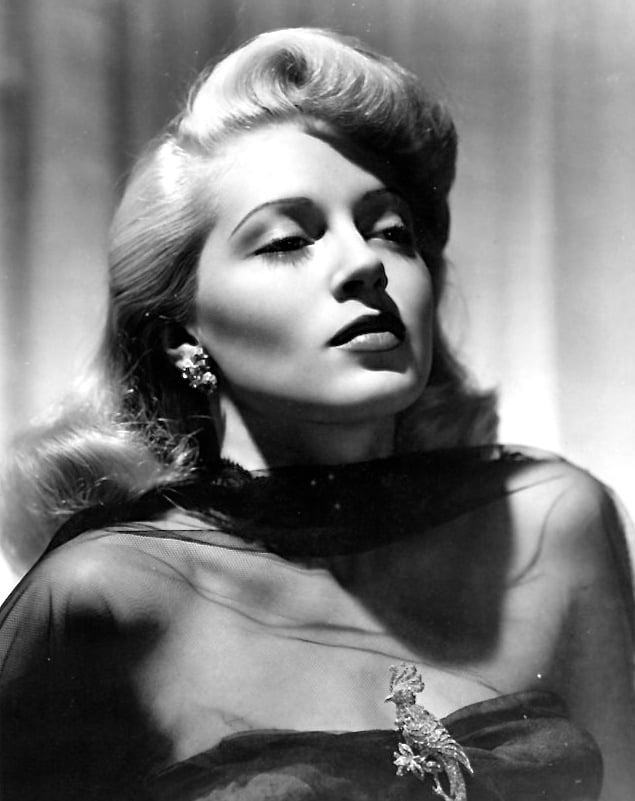
© Image credit
Death
A long-time heavy smoker, Turner was diagnosed with throat cancer in May 1992. She stopped smoking after her diagnosis and, in February 1993, announced she was cancer free. Despite treatment, the cancer returned in July 1994. Turner died at the age of 74 on June 29, 1995, of complications from throat cancer at her home in Century City, Los Angeles, California. Turner’s remains were cremated.
Turner was survived by Cheryl Crane, her only child; and Crane’s life partner Joyce “Josh” LeRoy, whom she said she accepted “as a second daughter”. They inherited some of Turner’s personal effects and $50,000 in Turner’s will (her estate was estimated in court documents at $1.7 million [$2.9 million in 2015 dollars]) with the majority of her estate left to Carmen Lopez Cruz, her maid and companion for 45 years and the caregiver for her final illness. Crane challenged the will and Lopez claimed the majority of the estate was consumed by probate costs, legal fees and Turner’s final illness.
For her contribution to the motion-picture industry, Turner has a star on the Hollywood Walk of Fame at 6241 Hollywood Boulevard. On May 24, 1950, Turner left hand- and footprints in front of the Grauman’s Chinese Theatre.
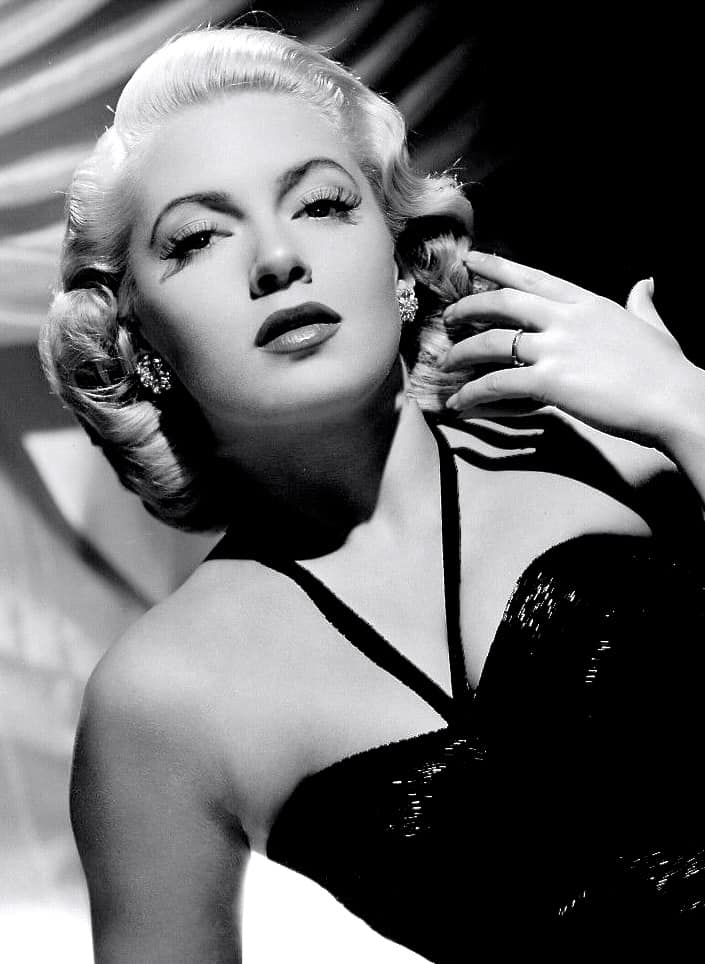
© Image credit
In music
Turner appears mentioned on the rap section of Madonna’s “Vogue” next to stars from the Golden Age era of Hollywood such as Rita Hayworth and Marilyn Monroe. Turner is mentioned in Nina Simone’s “My Baby Just Cares for Me”.
American singer-songwriter Elizabeth Grant, better known as Lana Del Rey, chose Turner’s name for the first part of her stage name.
Turner, along with Betty Grable and Dorothy Lamour, as some of the more famous pin-up girls during the War era, are mentioned in the song made famous by Frank Sinatra ‘Nancy (With The Laughing Face)’.

© Image credit
Further reading
- Crane, Cheryl; with Jahr, Cliff (1988). Detour: A Hollywood Story. Arbor House/William Morrow, New York. ISBN 0-87795-938-2.
- Crane, Cheryl; with Cindy De La Hoz (2008). Lana: The Memories, the Myths, the Movies. Running Press, Philadelphia. ISBN 978-0-7624-3316-2.
- Lewis, Brad (2007). Hollywood’s Celebrity Gangster. The Incredible Life and Times of Mickey Cohen Enigma Books, New York. ISBN 978-1-929631-65-0.
- Turner, Lana (1982) Lana: The Lady, the Legend, the Truth. Dutton, New York. ISBN 0-671-46986-X
- Basinger, Jeanine (1976) Lana Turner, A Pyramid Illustrated History of the Movies. Pyramid Books, New York.
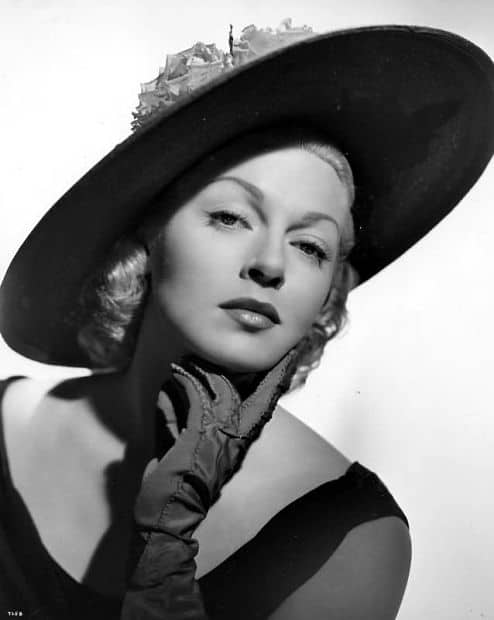
© Image credit
External links
- Lana Turner at the Internet Movie Database
- Lana Turner at the TCM Movie Database
- Lana Turner at AllMovie
- Lana Turner: Life and Legend
- Advocate.com, interview of Cheryl Crane (November 26, 2008)
- Lana Turner’s final interview, 1994 on YouTube
- “Lana Turner”. Find a Grave. Retrieved March 1, 2014.
